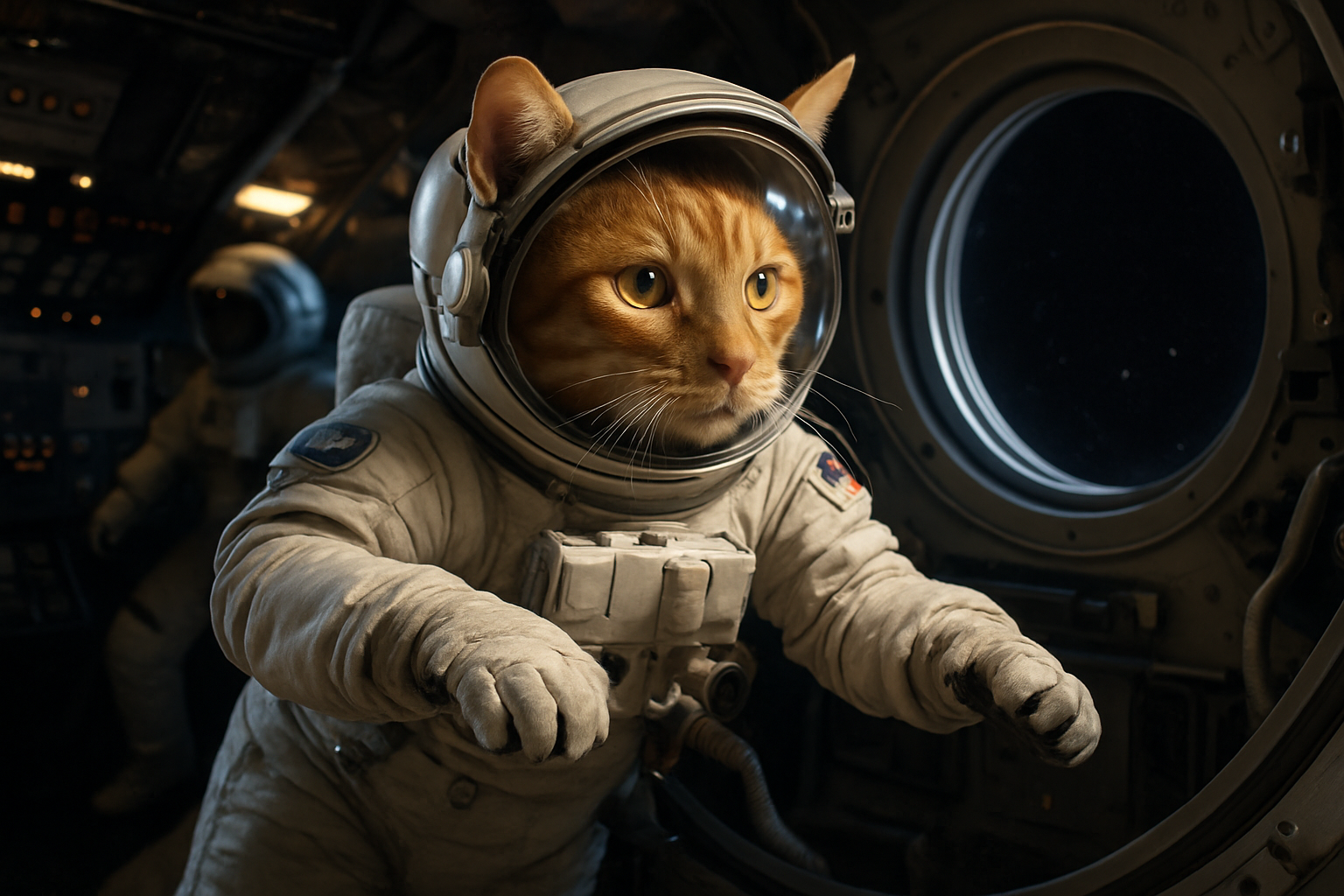Whiskers in Space: Feline Astronauts and the Future of Interstellar Travel
Imagine a future where cats float gracefully through zero gravity, their whiskers twitching as they navigate spacecraft. This isn't science fiction—it's a glimpse into the potential role of felines in space exploration. As we venture further into the cosmos, researchers are considering how our feline companions might contribute to long-term space missions, from pest control to psychological support for human astronauts.

Feline Physiology: Built for Space?
Cats possess several physiological traits that could make them well-suited for space travel. Their exceptional balance and ability to land on their feet, attributed to their vestibular system and flexible spine, could be advantageous in zero-gravity environments. Additionally, their low-maintenance grooming habits and efficient water conservation mechanisms could prove valuable in resource-limited space habitats.
Cosmic Critter Control: Cats as Extraterrestrial Exterminators
One of the most compelling arguments for feline astronauts is their potential role in pest control. Long-term space missions and planetary colonies will likely face challenges with insect infestations, which could threaten food supplies and equipment. Cats’ natural hunting instincts could provide an eco-friendly and self-sustaining solution to this problem, eliminating the need for chemical pesticides that might be harmful in closed environments.
Purr-fect Companions: The Psychological Benefits of Space Cats
Beyond their practical applications, cats could play a crucial role in maintaining the mental health of human astronauts during extended missions. The psychological toll of long-term space travel is well-documented, and the companionship of animals has been shown to reduce stress and anxiety. The presence of cats on spacecraft or space stations could provide comfort and a sense of normalcy for crews far from home.
Feline Space Suits and Zero-Gravity Litter Boxes: Overcoming Challenges
While the idea of cats in space is intriguing, it presents numerous challenges. Researchers are exploring the development of specialized feline space suits to protect cats from radiation and regulate their body temperature. Another significant hurdle is waste management—current prototypes for zero-gravity litter boxes utilize air suction systems to contain and dispose of waste safely.
Training the Cosmic Kitties: Preparing Cats for Space Travel
Not every cat is cut out to be an astronaut. Space agencies are developing rigorous training programs to identify and prepare felines with the right temperament and physical capabilities for space travel. This includes acclimatization to zero-gravity environments, adaptation to space food, and even basic task training to assist human crew members.
The Ethics of Feline Space Exploration
As exciting as the prospect of cats in space may be, it raises important ethical questions. Critics argue that subjecting animals to the risks of space travel is unethical, while proponents suggest that the potential benefits to both feline and human space travelers outweigh the risks. This ongoing debate will likely shape the future of animal involvement in space exploration.
From Science Fiction to Reality: The Timeline for Feline Space Programs
While cats in space might seem like a distant dream, several space agencies and private companies are already investing in research and development for feline space programs. Estimates suggest that we could see the first official feline crew member on a space mission within the next 10-15 years, with a price tag for the program ranging from $50 million to $100 million.
The Cosmic Cat-alyst: How Felines Might Shape the Future of Space Exploration
The inclusion of cats in space missions could revolutionize our approach to long-term space travel and colonization. From providing practical solutions to pest control and mental health support to inspiring new technologies in life support systems, feline astronauts might just be the key to unlocking the next frontier of human space exploration. As we continue to reach for the stars, our feline friends may very well be reaching right alongside us, proving that the sky is not the limit—it’s just the beginning.





